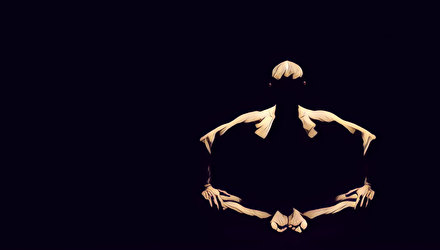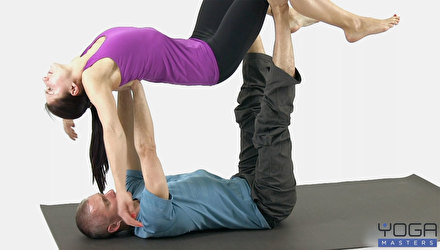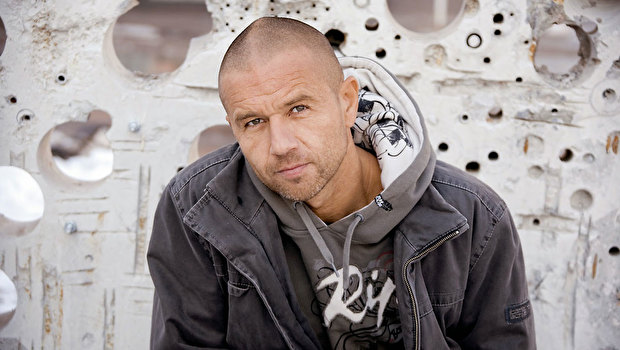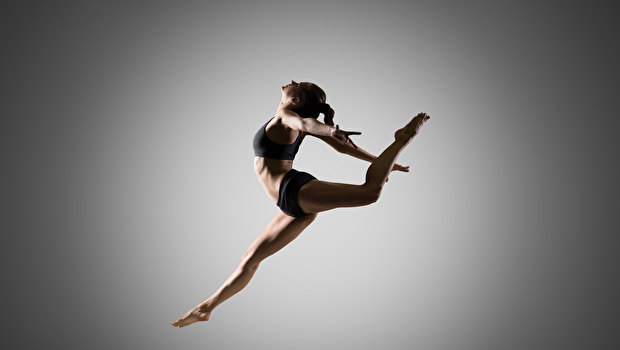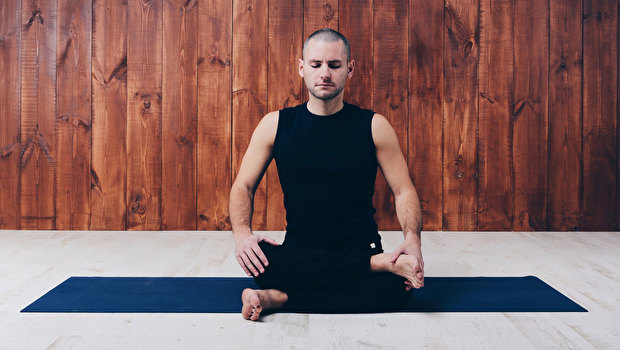Our body, organs and organ systems are made up of tissues. In the Ayurvedic canon, the main tissues of the body are called d'atu in Sanskrit. Etymologically, this term means something that helps the body or takes part in the formation of the basic structure of the body as a whole. In Ayurvedic medicine, seven tissues are distinguished, and they do not completely coincide with modern ideas of histologists. Plasma (Rasa) is considered to be the first tissue; it is functionally the first d'atu of the body, represented by chyle, plasma, and lymph. This tissue is the primary extract of nutrients from the digestive tract, which supplies them and nourishes all other body tissues. The second tissue is the Blood (Rakta) - or rather, the shaped, cellular elements of the blood. The third tissue is Muscles (Mamsa) - muscle tissue, which includes striated muscles of skeletal muscles, smooth muscles and cardiac muscle. The fourth tissue is Fat (Honey) - adipose tissue. The fifth tissue is Bones (Asti) - bone tissue. The sixth tissue is the Bone Marrow (Maja) - these are the tissues that lie inside the bones - nervous tissue, including the brain, spinal cord, peripheral nerves and bone marrow. The last, seventh tissue will be Reproductive tissues (Shukra/Artava) - testicles with appendages in men (shukra), ovaries with appendages and uterus in women (artava).
Ayurveda offers a very interesting processing of tissue nutrition. It all starts with chyle, a mixture of nutrients extracted from food, which form lymph, which in turn produces plasma, i.e. mature race. This takes 7 days. Over the next 7 days, the formation of blood cells occurs. Blood, in turn, nourishes the muscle tissue, the fatty one. Adipose tissue nourishes the bones, then the nutrients pass into the nervous tissue, and only after 42 days a thin extract from the food eaten reaches the reproductive organs. It is this circumstance that explains the long courses of dietary nutrition and treatment in the Ayurvedic tradition. Nutrition is not only the consumption of a certain number of calories and the quality of the food eaten. Food truly affects our body and nourishes it only a month after it enters the gastrointestinal tract.
In the process of tissue formation, an idea arises of secondary tissues (upad'atu), which receive nutrition from their main tissue, and of the waste products of tissues. It is easier to explain this with examples. Plasma-Rasa additionally nourishes the mammary glands, lactation (upad'atu Stanya) and excretion of menstrual blood (upad'atu Artava), and mucus will be a by-product of Rasa. Blood-Rakta nourishes the tendons (Kandara) and blood cells (Syrah), and the end product of the blood is bile. Muscle tissue (Mamsa) brings nourishment to the skin (upad'atu Twak) and muscle fat (upad'atu Vasa), Minor (waste) in this case will be discharge from the ears, eyes, mouth, nose, hair follicles. Honey additionally nourishes the ligaments (Snayu) and joints (Sandy), and the secretion of sweat glands (Sweda) will be a waste product of the vital activity of adipose tissue. Bone tissue (Asti) does not have upad'ata, but hair and nails act as mala for this tissue, therefore, based on the examination of hair and nails, the vaidya draws a conclusion about the functioning of bone tissue in our body. Brain tissue (Madzha) does not nourish anything, but secretes how small the secret of the mucous membrane of the eyes, skin, intestines. And finally, reproductive tissues do not nourish anything and have no waste, small. They secrete Ojas.

Like everything in the universe, the tissues of the body are formed from the five great elements. The element of the Earth prevails in muscle and adipose tissue. The element of Water predominates in chyle and lymph. The element of Fire dominates in the blood. Bones are formed by the element of Wind, but their internal cavities are dominated by the element of Ether. It should be emphasized once again that all five Elements participate in the formation of all seven tissues, but one of them can prevail, dominate in the formation of each of the tissues, as described above.
Violation of the nutrition and function of each of the tissues of the body leads to the development of a variety of painful symptoms and diseases. The greatest number of painful symptoms and diseases causes malnutrition and the release of the first tissue - plasma. The reason for this is considered to be the dependence of nutrition and the development of all subsequent tissues on the state of the Race. The list of these diseases includes: anorexia, weakness, migrating pains throughout the body, fever, fainting, impaired circulation through the channels of the body, loss of the ability to digest food, emaciation of the body, impotence, premature formation of wrinkles, graying. At the same time, malnutrition of reproductive tissues leads to infertility, impotence, the birth of painful, barren, non-viable children with developmental defects. Obviously, along with the narrowing of functions, the specialization of the tissue, the number of aspects of life that the tissue can influence decreases.
Ayurveda considers the human body not as a monolithic formation, firmly fenced off from the external environment by skin, but as a porous structure penetrated by many different channels. These channels differ significantly in their size, properties, qualities and density. However, they perform the same function - supply and excretion, which means ensuring the normal functioning of a tissue, organ, physical body, and the organism as a whole. The system of dense channels of the physical body and vital is traditionally called shrota. The channel (meal) can be called the gastrointestinal tract and, at the same time, the information channels corresponding to the Chinese meridians. The energy channels through which the subtle components of our body circulate are traditionally called Nadis. Their number is huge and, according to various sources, ranges from 10 to 350 thousand. They provide the unity of our essence and connection with the entire Universe and the Creator. The main ones will be Sushumna (Sutratma), Ida and Pingala. But in this article, we will focus on the dense channels that provide absorption and excretion in the dense body.
The disease, from the point of view of the importance of the functioning of the channel structures (both shrots and nadis), is, first of all, a violation of the circulation through the channels. Substrates, doshas and prana, as well as wastes, circulate or move from place to place through the channels. The movement is constant and continuous. For the onset of the disease, it is not necessary to form an obstruction of the channel as an extreme degree of violation, it is enough to reduce or increase the volume of circulation, a violation of the direction of movement, and a change in the quality of the transferred substrate. Maintaining a continuous, properly oriented flow of substrates through the channels is of paramount importance for organizing the nutrition of cells and tissues. Channels form systems that do not always coincide with the anatomical and physiological concepts of modern medicine. Shrotas include all channels of the body - the gastrointestinal tract, arteries, veins, lymphatic vessels, which are macroscopic, and tissue capillaries, which are microscopic. In Ayurvedic medicine, 13 channel systems are considered.
- Pranavaha shrota - channels that carry prana from the environment into the bloodstream.
- Udakavaha srota - channels that carry water, including plasma and lymph.
- Annavaha shrotas are channels through which nutrients and liquid are transported.
- Rasavaha shrota - channels through which rasa (lymph) circulates.
- Raktavaha shrota - channels through which blood circulates.
- Mamsavaha srota - channels that nourish muscle tissue.
- Medavaha shrota - channels that nourish adipose tissue.
- Astivakha shrota - channels that feed bone tissue.
- Majavaha Shrotas are channels that nourish the tissues of the nervous system.
- Shukravaha shrota - channels that feed the organs of the urogenital sphere.
- Purishavaha srota - channels through which feces are excreted.
- Mutravaha shrota - channels through which urine is excreted.
- Svedavaha shrota - channels through which sweat is excreted.
Women have 2 more types of specific channels:
- Artavavaha shrota - channels through which menstrual blood is excreted and a child is born.
- Stanyavaha srota - the channels through which breast milk is excreted during lactation.
If movement through these channels or circulation in them is disturbed due to any external or internal factors, a transit substrate accumulates in the channel, tissue metabolism is disrupted, which ultimately leads to the emergence and accumulation of insoluble toxins (ama). These toxic insoluble metabolites cannot be disposed of at the site of origin, but can circulate through other functioning channels. Ama impairs the function of those channels through which it moves, contributing to the development of the disease. Therefore, it is very important to take food or drugs that actively remove excrement from the body from time to time and use physical exercises.

Channels (shrotas), veins (sira), arteries (damani), lymphatic vessels (rasayani), capillaries (rasavahini), ducts (nadis), passage (panta), path (marga), body cavities (sharirakchidra), duct, closed at one end and open at the other (samvrtasamvrita), the palace (stana), the vessel (ashaya), the abode (niketa) - all these are names for visible and invisible channels in the tissue elements of the body. It can be considered fantastic that the ancient sages, who did not have microscopes and appropriate dyes at their disposal, knew about the existence and described a microscopic terminal lymphatic vessel, closed on one side, giving it a special name. The insufficiency of channels leads to disruption of the functioning of the tissues that this channel feeds or through which it passes. The damaged channel and tissue, in turn, generates, respectively, the insufficiency of other channels and tissues. Due to the provocative properties of the doshas, i.e. Vata, Pitta and Cap's, it is their imbalance that is responsible for the disruption of all channels and tissues.
Each type of channel has its own irritants that cause their insufficiency. Disturbances in Pranavaha shrotas cause poor nutrition, suppression of natural urges, long-term consumption of low-fat foods, exercise when hungry, etc. Prolonged exposure to heat, indigestion, alcohol, eating too dry food and excessive thirst provoke disruption of Udakavaha shrot. Annavach deficiency develops with prolonged intake of excessive amounts of low-quality food and a decrease in the strength of the digestive fire. Rasavaha shrotas are damaged by excessive consumption of heavy, cold and very fatty foods and prolonged sadness. Taking irritating, fatty, hot foods and drinks, prolonged exposure to the sun or by the fire damages the Raktavaha shrota. It is unfavorable for Mamsavaha to eat dense, heavy food and sleep immediately after eating. The activity of Medavaha shrot is disturbed by insufficient physical activity, daytime sleep and excessive consumption of fatty foods and wine. Violations of the function of Astivacha shrot cause physical exertion, accompanied by overload and bruises of the bones, as well as food that provokes the development of Vata dosha. Majavaha shrotas are damaged by crushing, swelling, injury and eating contraindicated food. Deficiency of Shukravaha shrot comes from sexual contact at the wrong time, in the wrong place, suppression of sexuality or hypersexuality, as a result of surgery, the use of alkalis and cauterization. The activity of the urinary system (Mutravaha shrota) is disturbed by drinking, eating or sexual contact in the presence of the urge to urinate, suppressing the urge to urinate. This eventually leads to stone formation and exhaustion. Purishavaha srotas are disturbed by suppressing the urge to defecate, eating large amounts of food or before the previous portion is digested, especially if the person has poor digestion. Sweating (Svedavaha Shrota) is disturbed by excessive physical exertion, prolonged exposure to heat, the use of cold and hot, being in anger, sadness, and fear. From the foregoing, it follows that the most common cause of impaired circulation through the channels of the body is their overload, exhaustion. It must be remembered that the passage of a thin or dense substrate through the channel is not a passive, but an active process that requires costs.
The heart and digestive tract (Mahashrota) are the beginning, the source of the channels through which prana circulates. A characteristic sign of insufficiency of these channels is too long or shortened, excited, slow or frequent breathing, which is accompanied by sounds and pain. The palate and pancreas are the beginning and controlling organ for the water-carrying channels. A characteristic sign of a violation of their work is dryness of the tongue, palate, lips, pharynx and excessive thirst. The stomach and the left side of the body are the beginning of the channels that carry food. The manifestation of a violation of their work will be food aversion, anorexia, indigestion and vomiting. If we analyze the symptoms of violations of the work of the main, main channels of the physical body, then it becomes clear that they almost completely coincide with the signs of serious illness and imminent death. If we imagine the system of body channels as a basin of a large river, the gastrointestinal tract and the cardiovascular system will correspond to the main channel of this river, into which all streams, streams and rivers ultimately flow. In the event of any obstruction to the flow in the main channel, the flow in the inflowing rivers, streams and streams slows down, which causes flooding and all sorts of troubles. Therefore, in order for the tissues and organs of the body to be healthy, it is absolutely necessary to take care of the cleanliness of the main channels, and above all the intestines. For this, in accordance with the type of constitution, it is necessary to carry out cleansing procedures in a timely manner and in full. Our zemstvo doctors were brilliant, who began the treatment of almost any disease with the appointment of a laxative - castor oil.
The system of cleansing procedures in Ayurvedic medicine is called Pancha Karma. Pancha is the numeral five, karma is action, that is, five cleansing actions. These are: vomiting (Vamana), laxative (Virechana), enema (Basti), cleansing through the nasal mucosa (Nasya) and bloodletting (Rakta mokshana). Some authors place Pancha karma in a separate section of Ayurveda, it is so important for maintaining health, preventing and treating diseases. Not without reason, in accordance with the canon of Charaka Samhita, the use of the most powerful harmonizing and rejuvenating drugs, called rasayanas, was prescribed only after Pancha karma. Cleansing procedures, no matter how long or intense they are, always consist of three stages: preparatory, main and recovery. The preparatory is designed to eliminate interference with cleaning and transfer the patient to a light diet. The main stage will be determined by the constitutive type of the person, the season and the problem to be solved. The recovery phase is no less important than the cleansing itself. During any cleansing procedures, the digestive fire is suppressed, this is an absolutely necessary condition for effective cleansing. But after the procedures, ordinary life begins, and if you do not restore normal digestion, and even better increase its effectiveness, then a person will not feel healthy and strong. Now we are experiencing a craze for cleansing procedures that are recommended as universal, for everyone and always. Be attentive both to the procedure itself and to the accompanying recommendations, if any. Bigger and more powerful is not always better!
Be healthy and blessed with light and love.
Author: A.V.Dmitrieva



